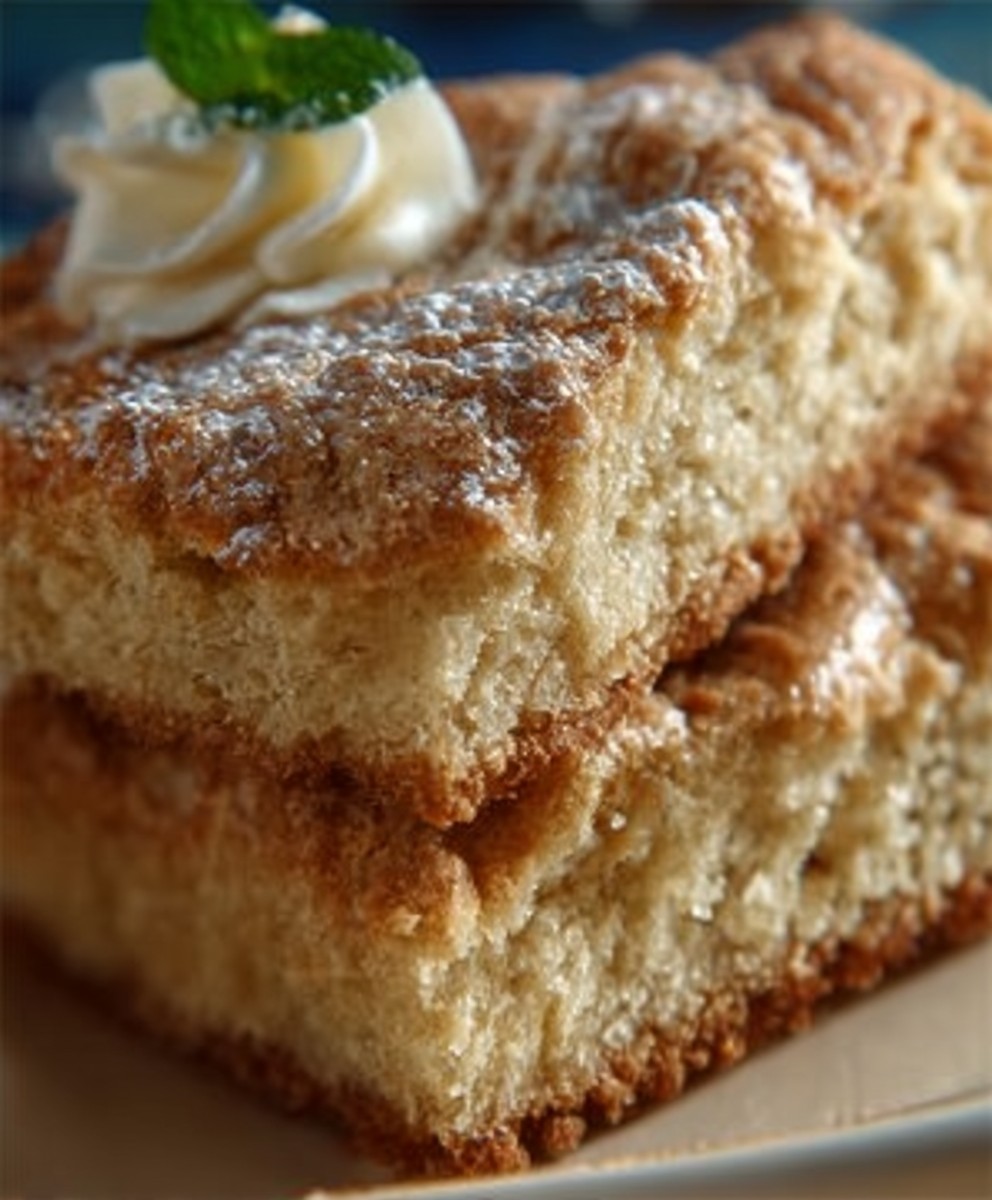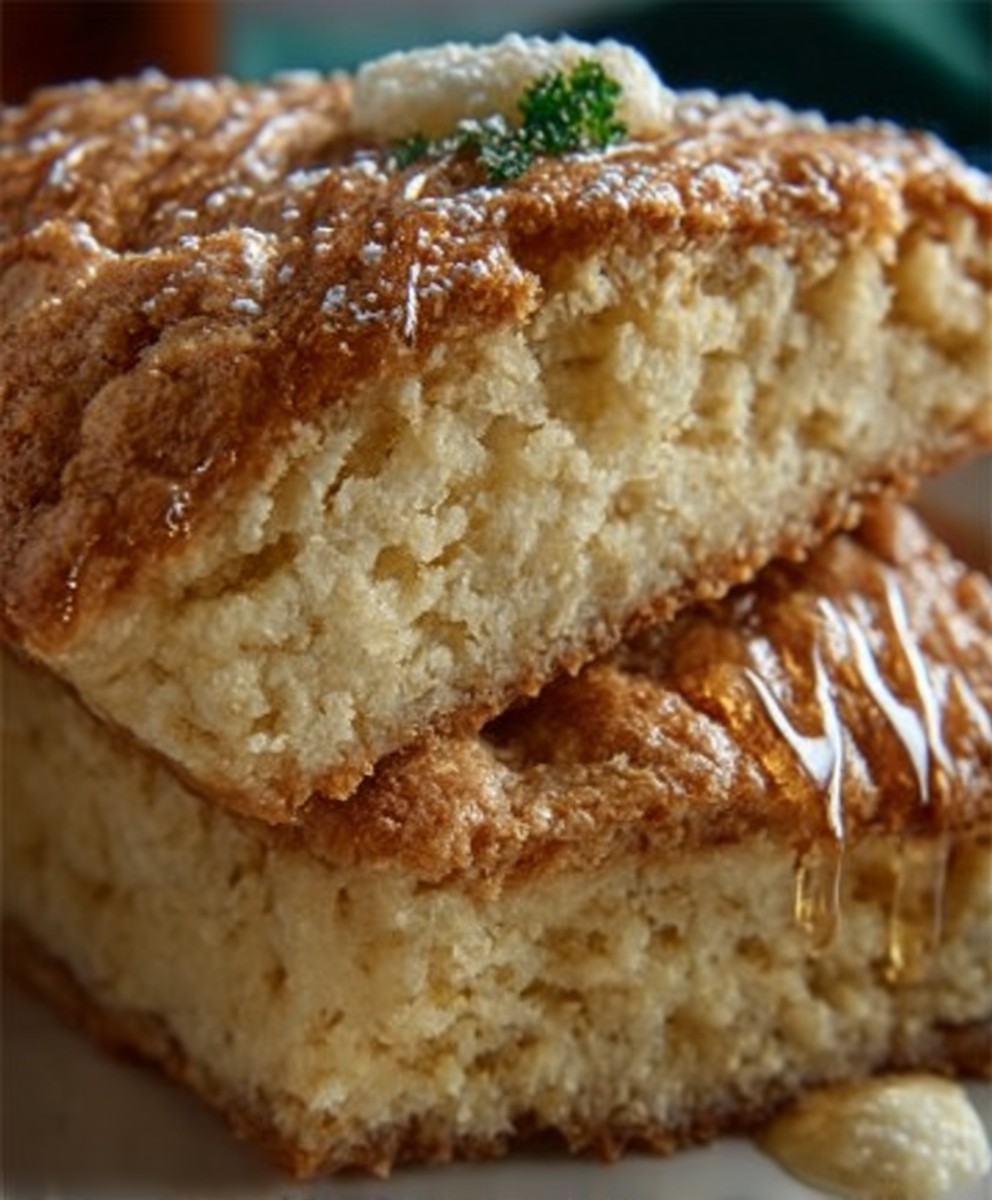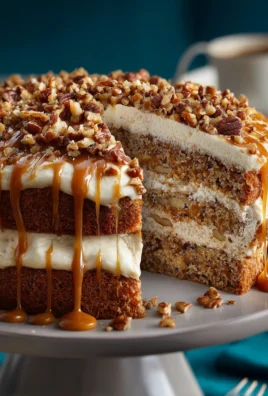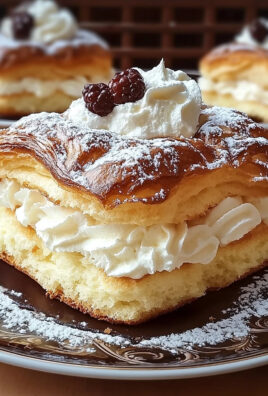Dutch Boterkoek, or butter cake, is a simple yet incredibly satisfying treat that has graced Dutch tables for generations. Imagine a buttery, melt-in-your-mouth shortbread, rich with the aroma of vanilla and a hint of almond that’s Boterkoek in a nutshell! Have you ever craved a dessert that’s both comforting and elegant, perfect for an afternoon tea or a special occasion? Look no further.
This classic bake isn’t just delicious; it’s steeped in Dutch history. Traditionally, Boterkoek was a celebratory cake, often baked for special events and holidays. Its rich, buttery flavor was a symbol of prosperity and good fortune. Even today, sharing a slice of Dutch Boterkoek feels like sharing a piece of Dutch heritage.
What makes Boterkoek so beloved? It’s the perfect balance of textures a slightly crisp top giving way to a soft, almost fudgy interior. The simplicity of the ingredients allows the buttery flavor to truly shine, enhanced by the subtle notes of vanilla and almond. Plus, it’s incredibly easy to make! With just a handful of pantry staples, you can whip up this delightful cake and transport yourself to the charming cafes of Amsterdam. Let’s get baking!
Ingredients:
- 250g (1 cup + 1 tbsp) unsalted butter, softened
- 200g (1 cup) granulated sugar
- 300g (2 1/2 cups) all-purpose flour
- 1 large egg, lightly beaten (for brushing)
- 1/4 teaspoon salt
- 1 teaspoon vanilla extract
- Optional: slivered almonds for decoration
Preparing the Dough:
- First things first, make sure your butter is nice and soft. It should be soft enough that you can easily press a finger into it, but not melted. If it’s too hard, it will be difficult to cream with the sugar, and if it’s too melted, the boterkoek might spread too much while baking.
- In a large bowl, cream together the softened butter and granulated sugar until light and fluffy. I like to use an electric mixer for this, but you can definitely do it by hand if you’re feeling ambitious! Just make sure you really work it until it’s nice and smooth. This step is crucial for creating a tender and delicious boterkoek.
- Add the vanilla extract and salt to the butter and sugar mixture. Mix until well combined. The vanilla adds a lovely aroma and flavor, while the salt balances the sweetness. Don’t skip the salt it really makes a difference!
- Now, gradually add the flour to the wet ingredients. I recommend adding it in three additions, mixing after each addition until just combined. Be careful not to overmix the dough, as this can develop the gluten and result in a tough boterkoek. You want a tender, crumbly texture, so mix until the flour is just incorporated.
- Once the dough comes together, form it into a disc. Wrap the disc tightly in plastic wrap and refrigerate for at least 30 minutes. This chilling time is important because it allows the gluten to relax and the butter to firm up, which will prevent the boterkoek from spreading too much in the oven. I sometimes chill it for an hour or even longer if I have the time.
Preparing for Baking:
- Preheat your oven to 350°F (175°C). While the oven is preheating, grease and flour an 8-inch round baking pan. You can also line the bottom of the pan with parchment paper for easy removal. I find that greasing and flouring the pan works just fine, but the parchment paper adds an extra layer of insurance against sticking.
- Remove the dough from the refrigerator and place it in the prepared baking pan. Use your fingers to press the dough evenly into the pan, making sure it reaches all the edges. You want a nice, even layer of dough so that the boterkoek bakes uniformly.
- In a small bowl, lightly beat the egg. This will be used to brush the top of the boterkoek, giving it a beautiful golden-brown color.
- Brush the top of the dough with the beaten egg. Be sure to cover the entire surface evenly. This step is what gives the boterkoek its signature glossy finish.
- If desired, decorate the top of the boterkoek with slivered almonds. You can arrange them in a decorative pattern or simply sprinkle them evenly over the surface. The almonds add a nice crunch and visual appeal. I personally love the look of the almonds, but it’s totally optional.
- Use a fork to create a crosshatch pattern on the surface of the dough. This helps to release steam during baking and also adds to the traditional look of boterkoek. Make sure the lines are deep enough to be visible after baking, but not so deep that you cut all the way through the dough.
Baking the Boterkoek:
- Bake in the preheated oven for 25-35 minutes, or until the top is golden brown and the edges are slightly darker. The baking time may vary depending on your oven, so keep a close eye on it. You want the boterkoek to be cooked through, but not overbaked.
- To check for doneness, insert a toothpick into the center of the boterkoek. If it comes out clean or with just a few moist crumbs attached, it’s done. If it comes out with wet batter, continue baking for a few more minutes.
- Remove the boterkoek from the oven and let it cool completely in the pan before cutting and serving. This is important because the boterkoek is very delicate when it’s warm and can easily break apart. Letting it cool completely allows it to firm up and makes it easier to slice.
Serving and Storing:
- Once the boterkoek is completely cool, carefully remove it from the pan. If you lined the pan with parchment paper, you can simply lift it out. Otherwise, you may need to run a knife around the edges to loosen it.
- Cut the boterkoek into wedges or squares and serve. It’s delicious on its own, but you can also serve it with a dollop of whipped cream or a scoop of ice cream.
- Store any leftover boterkoek in an airtight container at room temperature for up to 3 days. It will stay fresh longer if you store it in the refrigerator, but it may become slightly drier.
Tips and Variations:
- Use high-quality butter: Since butter is the star of this recipe, it’s important to use high-quality butter for the best flavor. I recommend using European-style butter, which has a higher fat content and a richer flavor.
- Don’t overmix the dough: Overmixing the dough will develop the gluten and result in a tough boterkoek. Mix until the flour is just incorporated.
- Chill the dough: Chilling the dough is essential for preventing the boterkoek from spreading too much in the oven.
- Adjust the baking time: The baking time may vary depending on your oven, so keep a close eye on it. You want the boterkoek to be cooked through, but not overbaked.
- Add lemon zest: For a brighter flavor, add 1 teaspoon of lemon zest to the dough.
- Add almond extract: For a more intense almond flavor, add 1/2 teaspoon of almond extract to the dough.
- Make it gluten-free: To make this recipe gluten-free, substitute the all-purpose flour with a gluten-free all-purpose flour blend. You may need to add a little bit of xanthan gum to help bind the dough.
- Experiment with different toppings: Instead of slivered almonds, try topping the boterkoek with chopped nuts, sprinkles, or a drizzle of chocolate.
Troubleshooting:
- My boterkoek is too dry: This could be due to overbaking or using too much flour. Make sure to measure the flour accurately and don’t overbake the boterkoek.
- My boterkoek is too greasy: This could be due to using butter that is too soft or not chilling the dough long enough. Make sure the butter is softened but not melted and chill the dough for at least 30 minutes.
- My boterkoek spread too much: This could be due to using butter that is too soft or not chilling the dough long enough. Make sure the butter is softened but not melted and chill the dough for at least 30 minutes.
- My boterkoek is not golden brown: This could be due to not brushing the top with egg wash or not baking it long enough. Make sure to brush the top with egg wash and bake until golden brown.
Enjoy your homemade Dutch Boterkoek! It’s a simple yet incredibly satisfying treat that’s perfect for any occasion.

Conclusion:
This Dutch Boterkoek recipe isn’t just another cookie recipe; it’s a journey to buttery, melt-in-your-mouth perfection. It’s a taste of Dutch tradition, a simple yet elegant treat that’s guaranteed to impress. I truly believe that once you experience the rich, tender crumb and the subtle almond notes, you’ll understand why I consider this a must-try recipe. It’s the kind of bake that becomes a family favorite, requested time and time again.
Why is this Boterkoek so special? It’s all about the quality of ingredients and the simplicity of the method. There are no complicated steps or fancy techniques required, just pure, unadulterated butter goodness. The result is a cookie that’s far more than the sum of its parts a truly exceptional baking experience.
But the fun doesn’t stop there! While the classic recipe is divine on its own, there are plenty of ways to customize your Boterkoek to suit your taste. For a festive touch, try adding a sprinkle of coarse sugar before baking. This will create a beautiful, sparkly crust and add a delightful crunch. You could also experiment with different extracts. A hint of lemon or orange zest would add a bright, citrusy note, while a touch of vanilla extract would enhance the overall sweetness.
Serving Suggestions: This Boterkoek is incredibly versatile. It’s perfect served warm with a scoop of vanilla ice cream for a decadent dessert. It also pairs beautifully with a cup of coffee or tea for a cozy afternoon treat. For a more sophisticated presentation, try cutting the Boterkoek into small squares and serving it alongside fresh berries and whipped cream. It’s also a wonderful addition to a cheese board, providing a sweet and buttery contrast to savory cheeses. And, of course, it makes a fantastic homemade gift for friends and family. Imagine the delight on their faces when they receive a beautifully wrapped piece of this delicious Dutch treat!
Variations to Explore: Feeling adventurous? Consider adding chopped nuts, such as almonds or pecans, to the dough for added texture and flavor. You could also swirl in a layer of jam or Nutella before baking for a truly indulgent treat. For a chocolate twist, try adding cocoa powder to the dough or drizzling melted chocolate over the baked Boterkoek. The possibilities are endless! Don’t be afraid to experiment and create your own unique version of this classic recipe.
I’m so excited for you to try this recipe and experience the magic of homemade Dutch Boterkoek. I’m confident that you’ll love it as much as I do. So, gather your ingredients, preheat your oven, and get ready to bake something truly special.
And now, the most important part: I want to hear about your experience! Did you try the classic recipe, or did you experiment with variations? What were your favorite serving suggestions? Share your photos and stories in the comments below. I can’t wait to see what you create! Happy baking! Let me know if you have any questions, I’m always happy to help.
Dutch Boterkoek: The Ultimate Guide to Baking This Classic Treat
Rich, buttery Dutch Boterkoek (Butter Cake) with a slightly crumbly texture. A simple recipe for a delicious, golden-brown cake with vanilla and optional almond topping.
Ingredients
- 250g (1 cup + 1 tbsp) unsalted butter, softened
- 200g (1 cup) granulated sugar
- 300g (2 1/2 cups) all-purpose flour
- 1 large egg, lightly beaten (for brushing)
- 1/4 teaspoon salt
- 1 teaspoon vanilla extract
- Optional: slivered almonds for decoration
Instructions
- Ensure butter is softened but not melted.
- In a large bowl, cream together the softened butter and granulated sugar until light and fluffy. Use an electric mixer or do it by hand.
- Add the vanilla extract and salt to the butter and sugar mixture. Mix until well combined.
- Gradually add the flour to the wet ingredients in three additions, mixing after each addition until just combined. Be careful not to overmix the dough.
- Form the dough into a disc. Wrap tightly in plastic wrap and refrigerate for at least 30 minutes (or longer).
- Preheat oven to 350°F (175°C). Grease and flour an 8-inch round baking pan (or line with parchment paper).
- Remove the dough from the refrigerator and place it in the prepared baking pan. Use your fingers to press the dough evenly into the pan, making sure it reaches all the edges.
- In a small bowl, lightly beat the egg.
- Brush the top of the dough with the beaten egg.
- If desired, decorate the top of the boterkoek with slivered almonds.
- Use a fork to create a crosshatch pattern on the surface of the dough.
- Bake in the preheated oven for 25-35 minutes, or until the top is golden brown and the edges are slightly darker.
- Check for doneness by inserting a toothpick into the center. It should come out clean or with just a few moist crumbs attached.
- Remove the boterkoek from the oven and let it cool completely in the pan before cutting and serving.
- Once completely cool, remove from pan. Cut into wedges or squares and serve.
- Store leftovers in an airtight container at room temperature for up to 3 days.
Notes
- Use high-quality butter for the best flavor.
- Don’t overmix the dough.
- Chilling the dough is essential.
- Adjust baking time as needed.
- Variations: Add lemon zest (1 tsp), almond extract (1/2 tsp), or experiment with different toppings.
- Troubleshooting:
- Too dry: Don’t overbake, measure flour accurately.
- Too greasy: Use softened, not melted, butter; chill dough longer.
- Spreads too much: Use softened, not melted, butter; chill dough longer.
- Not golden brown: Brush with egg wash, bake longer.





Leave a Comment